6 conclusions from the Tour of Flanders
Doubts of Sagan, debutants and Bettiol legs
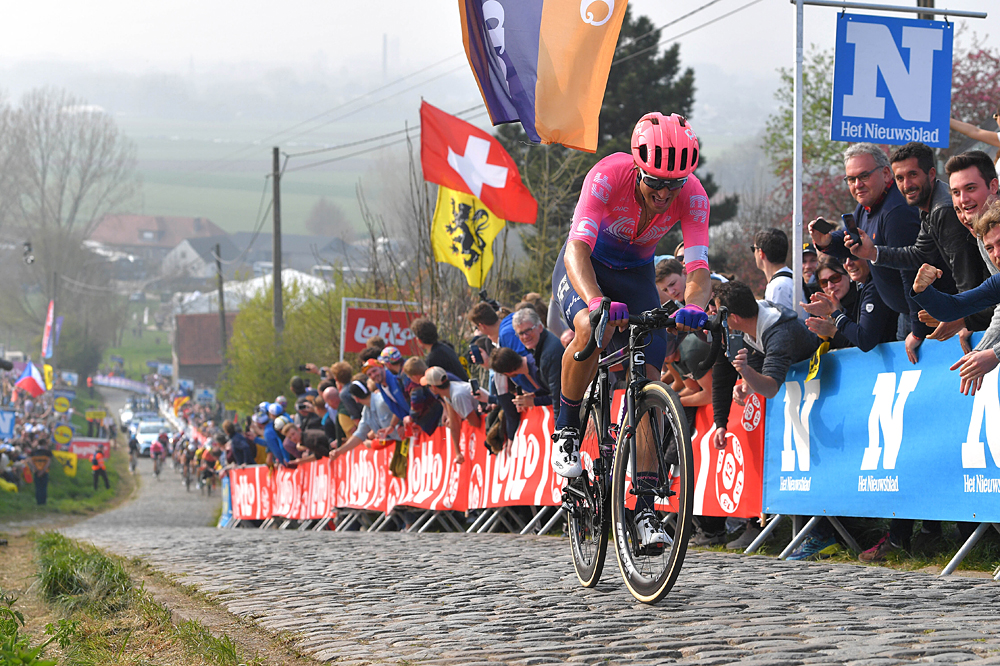
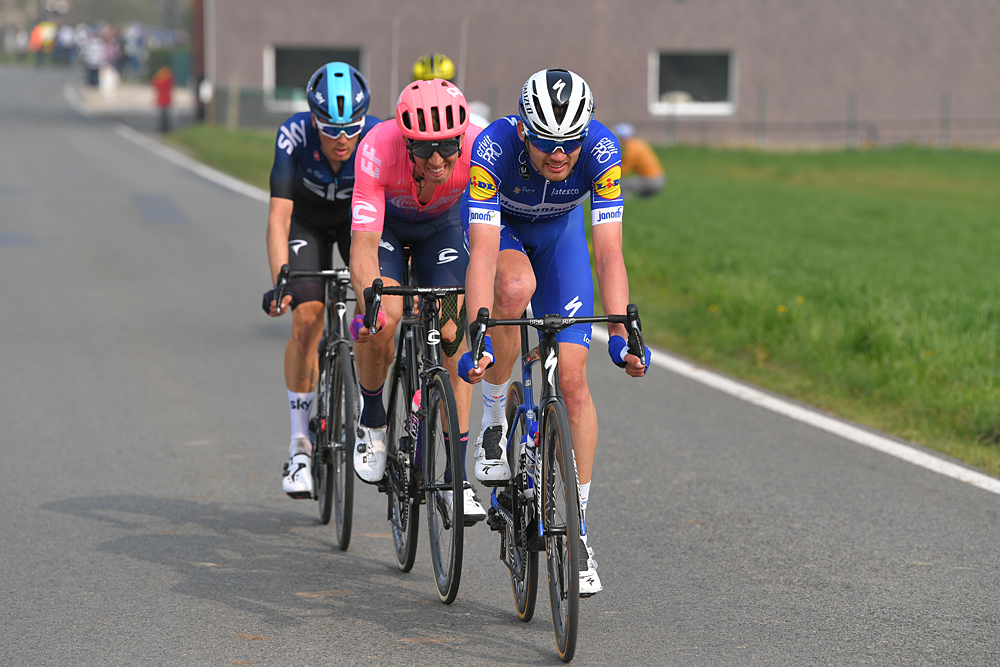
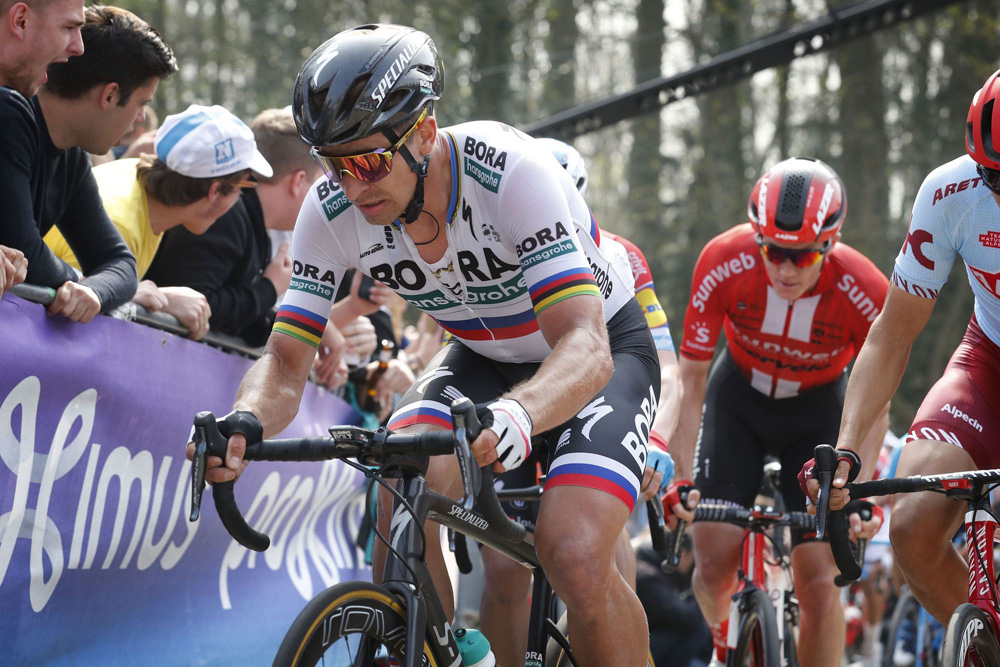
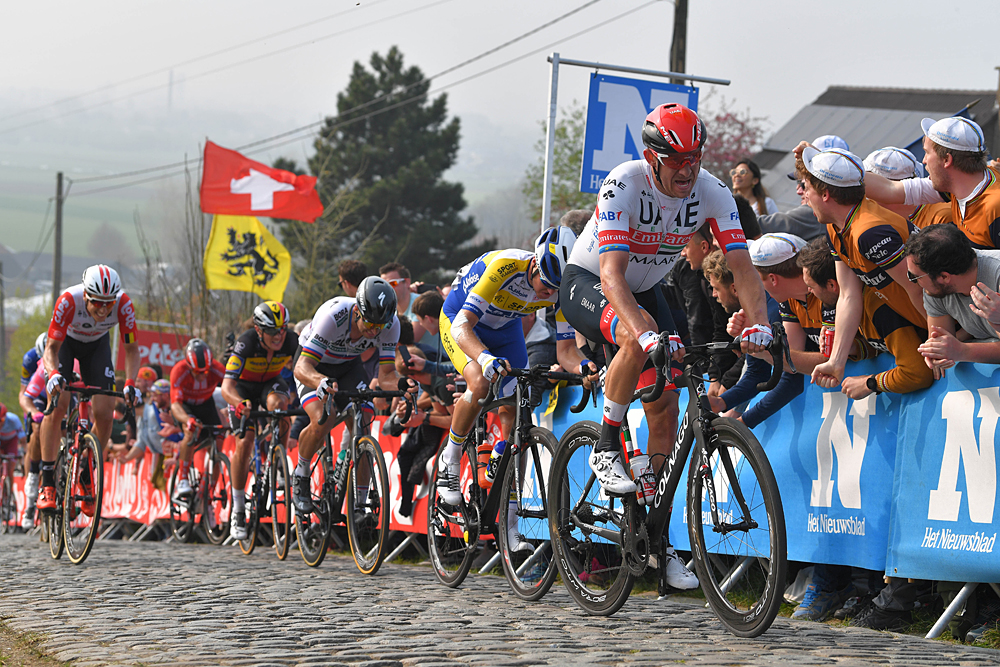
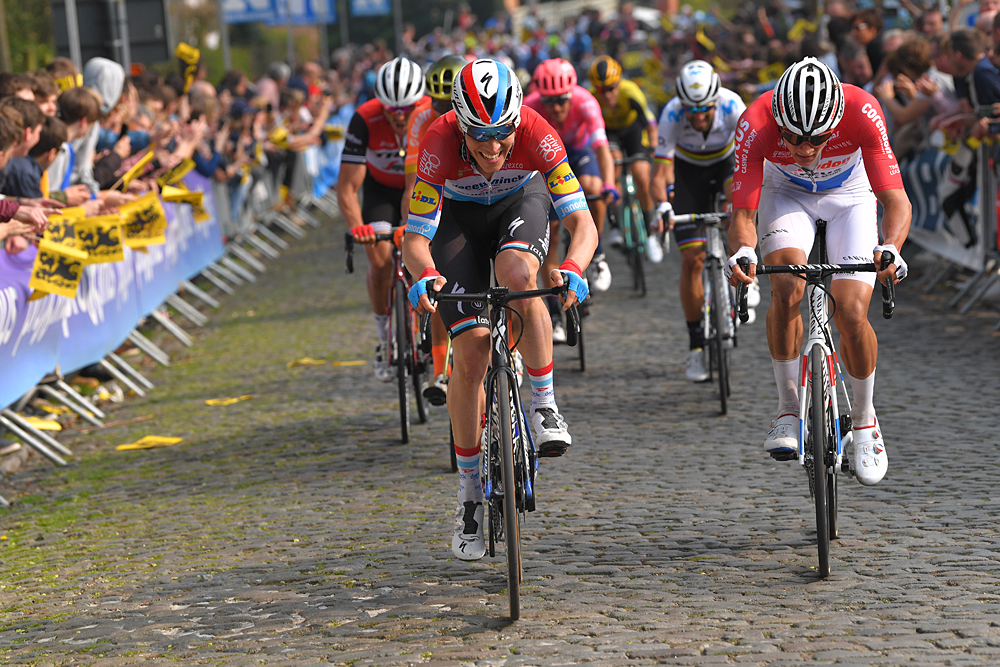
This year’s Tour of Flanders was far from a vintage edition, simmering nicely throughout but never actually boiling over into a full-blown race. But the second Monument of the season created plenty of talking points nonetheless.
Alberto Bettiol claimed the first victory of his career on one of the biggest stages in cycling, while the Belgians failed to make an impact in their home race. Kasper Asgreen followed in the footsteps of his compatriot Mads Pedersen to finish second on the podium, thus salvaging Deceuninck-QuickStep’s race in the process.
We have put a list of the top conclusions from Sunday’s race below.
Bettiol had legs and balls, but didn’t need luck
There are times when Flanders Classics’ devotion to the bottom line can make ASO seem like a charitable organisation. Removing the Muur and Bosberg from the finale of the Tour of Flanders and lining the Kwaremont with VIP tents was the most obvious manifestation of their vision of cycling as business, and seven years on, Flanders Classics head Wouter Vandenhaute still finds himself defending the decision.
In an interview with Het Laatste Nieuws last week, Vandenhaute claimed that the Kwaremont-Paterberg finale was introduced to ensure that only riders of the very highest calibre won the Tour of Flanders each year. “Look at the winners when they were still riding on the Muur van Geraardsbergen and finished in Meerbeke: Wesemann, Nuyens, Ballan, Bortolami. You got those kinds of winners,” Vandenhaute said. “What do we have now, after the course change and the finish in Oudenaarde? Boonen, Cancellara, Kristoff, Sagan, Gilbert and Terpstra.”
Implicit in that observation was the fact that such marketable winners are good for business. But what, Het Laatste Nieuws asked, if a less heralded rider like Sebastian Langeveld or Alberto Bettiol were to win the Ronde? “They are not going to win,” Vandenhaute said.
Bettiol, of course, duly scored the first professional victory of his career at the Ronde, stunning the crowds assembled at the finish in Oudenaarde. It was a surprise on a par with any of those cited by Vandenhaute, but unlike Bortolami in 2001, for instance, Bettiol’s triumph owed little to the specific tactical circumstances of the race and everything to the strength in his legs.
Get The Leadout Newsletter
The latest race content, interviews, features, reviews and expert buying guides, direct to your inbox!
The pre-race favourites – bar, it appears, Mathieu van der Poel – watched him ride away on the Kwaremont but simply could not follow his pace. “I expected a move like that from Jungels or Van Aert, and I knew that I was capable of keeping up with them all day long,” said Greg Van Avermaet. “That wasn't the case with Bettiol. I kept going at my pace and nobody passed me, which meant that they didn't have much left in the tank either. I wasn't strong enough to keep up with him.”
In the lead-up to this year’s race, Nick Nuyens told Cyclingnews that anybody hoping to to beat QuickStep – as he did in 2011 – would need “legs, balls and luck.” Bettiol had the first two qualities in spades, but he didn’t need much of the third. Maybe Vandenhaute, in spite of himself, was right all along. Once again in the new Ronde, the strongest man won. (BR)
The Belgians underwhelm
This year was the first time since 2001 that a Belgian failed to make the podium at the Tour of Flanders. Despite a whole host of top contenders, seven of which made it into the main group of favourites at the end, the best Belgium could manage was seventh place with Oliver Naesen.
It has been an underwhelming Classics for the Belgians in general with not one race victory going to the home side in any of the one-day races since the Classics began at Omloop Het Nieuwsblad. It had looked promising with Greg Van Avermaet’s second place in the first of the races, while they had two on the podium at the E3 BinckBank Classic and Naesen gave them third at Gent-Wevelgem.
However, much like the Tour of Flanders itself, the Belgian challenge at the Classics was one that never truly boiled over. It was not helped by Naesen and former Flanders champion Philippe Gilbert falling sick. Gilbert made little impact on the race as he was shelled off the back of the main bunch as the race began to ramp up.
A strong core of Belgian riders, including Van Avermaet, Naesen, Yves Lampaert, Wout van Aert and Tiesj Benoot, held firm in the main group as it was whittled down by each passing of a climb. However, none of them had an answer when Alberto Bettiol shot up the road with just under 20 kilometres remaining.
There was perhaps an element of complacency to their slow lack of immediate response, but the failure to work together sealed their fate in the end. Third place was still up for grabs as they approached the line, but with some fast sprinters, such as Alexander Kristoff, in the bunch, their fates were sealed. (SO)
Debutants contradict notion that Flanders requires experience
They say the Tour of Flanders is a race that requires experience. The cobbles and climbs alone take years to truly master, never mind the fight for position in a tense peloton and the grasping of the seemingly infinite tactical possibilities. On Sunday, a group of debutants made that notion seem like nonsense. Of the top 10 finishers, four were riding De Ronde for the first time.
Kasper Asgreen, a 24-year-old riding his first cobbled Classics campaign led them in, behind solo winner Alberto Bettiol, who himself was only making his third appearance. Then there was Mathieu van der Poel, also riding his first spring on the road, in 4th, Michael Matthews in 6th, and Alejandro Valverde in 8th. Further down the select group of 16 that came in behind Bettiol was Bob Jungels, who had enjoyed such an extraordinary introduction to the cobbles in previous weeks that many talked about him as the top favourite for the race.
The 2019 Tour of Flanders showed us that, while local knowledge can make a difference for the lesser lights, there’s no substitute for strength and class. (PF)
Doubts persist over Sagan
Ever since falling ill while training in the Sierra Nevada ahead of Tirreno-Adriatico, it has been difficult to assess Peter Sagan.
At Milan-San Remo he made the elite selection on the Poggio but then sprinted to a disappointing fourth. That was mostly explained by the fact he found himself out of position ahead of the final burst to the line. At E3 BinckBank, the first of the main cobbled classics period in Belgium, he seemed to blow up on the Tiegemberg when Greg Van Avermaet put in a stinging acceleration. That, again, was mitigated when it turned out he’d suffered a mechanical, but when asked if his 17th place was due to the mechanical or bad legs, he replied: “A bit of both”. At Gent-Wevelgem, the reigning champion could muster no sprint from the reduced peloton but, then again, he had spent 180 kilometres off the front during an aggressive race.
At Flanders he was visibly panting on the final climb of the Paterberg in a striking contrast with three years ago, when he eased so effortlessly clear of the rest of the field on the same climb. Sagan had remained elusive about his condition throughout the spring, but he could no longer hide it after De Ronde. “I’m not like I was three years ago,” he said. It seemed a significant statement for someone who usually prefers to chalk his disappointments down to ‘destiny’.
He acknowledged that he had “lost a lot” due to his illness, but – to introduce more uncertainty – it’s not clear whether that is the whole story. His coach Patxi Vila’s comments after the race were interesting. “He’s not finding the feelings he had in the past and we need to analyse why that’s happening,” he said. Asked if the illness was a factor, he would only say: “It’s not helping, for sure.”
Sagan still has time to salvage something from his spring campaign, with Paris-Roubaix, Amstel Gold Race, and Liège-Bastogne-Liège coming up over the next three Sundays. A full assessment of the three-time world champion will have to wait until the end of April. (PF)
Kristoff
The Tour of Flanders has been a solid hunting ground for Alexander Kristoff with a top-five placing coming almost like clock-work every year – bar two occasions. However, the Norwegian had not returned to visit the podium since his triumphant victory in 2015 – his second monument win after Milan-San Remo in 2014.
As a two-time monument winner, Kristoff was always going to be compared against those results - and by those standards the last few seasons have been a little disappointing. Though he has not hit those heady heights for some time, Kristoff has remained a consistent performer, particularly when the parcours gets tougher.
It must have been a bit of a blow for Kristoff when UAE Team Emirates brought in Fernando Gaviria and put the Norwegian as his lead-out man. Credit to both Kristoff and Gaviria, the duo appears to have put any ego aside and are working together. His Gent-Wevelgem victory a week ago was just reward for Kristoff for plugging away these last few years, with Gaviria giving him the green light to have a go himself.
Rightly so, Kristoff was cautious about what that victory would mean for his prospects at the Tour of Flanders. Helped by a race that was more grinding than explosive, Kristoff cleared each hurdle – or helling – to make it into the main group of contenders. Had there been more co-operation in the chase group, we may well have been talking about a second Flanders success for Kristoff, but we’ll never know that.
He still has another shot at a Monument win at this weekend’s Paris-Roubaix, but even though it seems perfectly suited to his capabilities it is a race that he has never really gone well at. Even without something tangible from Roubaix, Kristoff’s Classics could be deemed a success. (SO)
Asgreen the revelation as Deceuninck-QuickStep stick to philosophy
Tom Boonen knows a thing or two about young riders suddenly outshining their more established leaders in a major Classic. His story effectively began, after all, as a 21-year-old Paris-Roubaix debutant in 2002, when he proved stronger than his US Postal leader George Hincapie and placed third behind Johan Museeuw.
Small wonder, then, that ‘Tommeke’ had only praise for young Kasper Asgreen, who was proved stronger than some illustrious Deceuninck-QuickStep teammates as he placed second in his debut Tour of Flanders. “Once again, Patrick Lefevere conjures one from his top hat,” Boonen wrote admiringly in his Het Laatste Nieuws column. “[Asgreen] wasn’t gifted second place, he really had to earn it.”
This time last year, Asgreen was only a week into his QuickStep career, having signed from Continental outfit Virtu on April 1. He made his debut at Scheldeprijs and took readily to life at WorldTour level. He was part of QuickStep’s winning squad in the 2018 team time trial Worlds and was added to the cobbled Classics unit for 2019.
Even so, the 24-year-old was not guaranteed his place in the Monuments and he began the Ronde in a supporting role, behind leaders Philippe Gilbert, Yves Lampaert, Bob Jungels and Zdenek Stybar. That quartet faltered in turn, but Asgreen barely put a pedal stroke askew all day. A pace-setter on the Muur, he went on the attack on the first ascent of the Paterberg and was still at the front of the race come the final lap over the Kwaremont. Then, even after he was caught and passed by Bettiol, he had the sharpness to clip away from the chasing group and take second place.
“This is once again proof that youth is doing well in the year 2019 and can perfectly take over when the team leaders fail. Perhaps that is the most important lesson of this atypical Tour of Flanders,” Boonen wrote.
It was certainly the lesson from Deceuninck-QuickStep, whose preordained leaders refused to pull rank in the finale. After struggling in the last 50km, Jungels unselfishly gave the ball to the man in the best position on the approach to Oudenaarde, by creating the opportunity for Asgreen to slip clear for second place. The team didn’t win the Tour of Flanders, but they stayed loyal to their ‘next man up’ philosophy to the end. (BR)